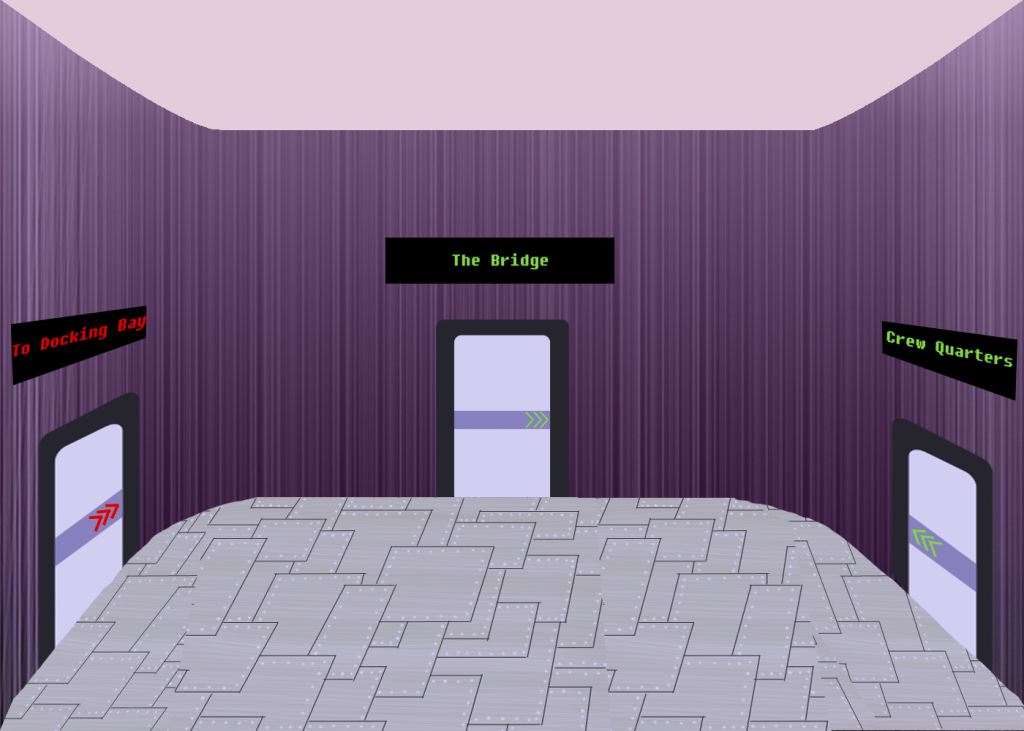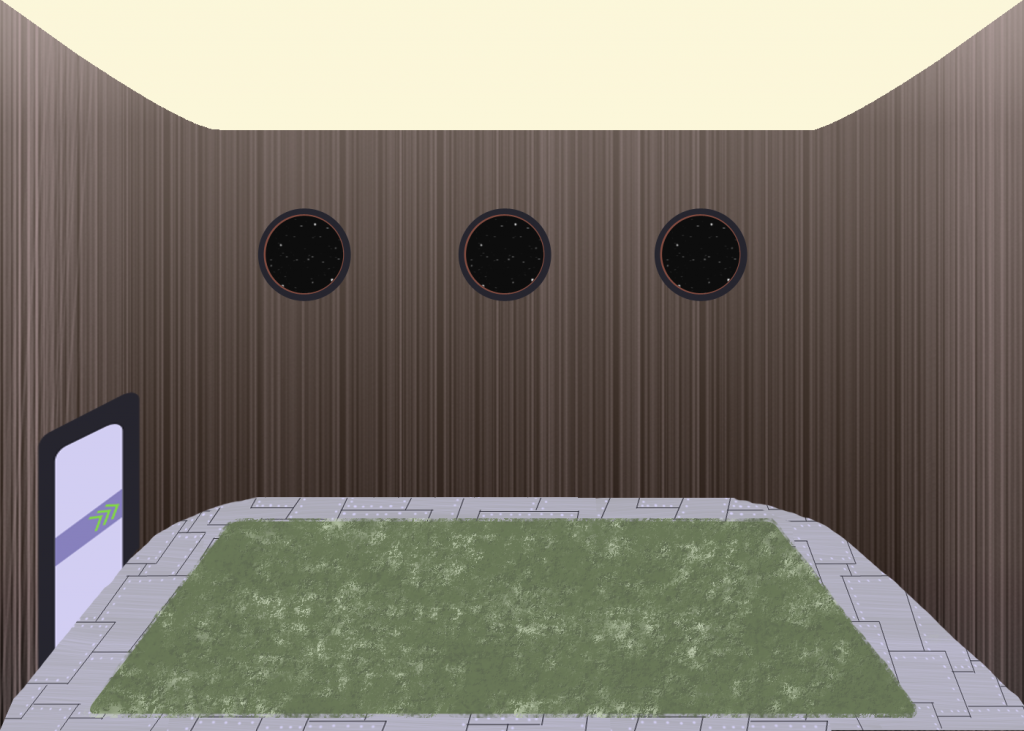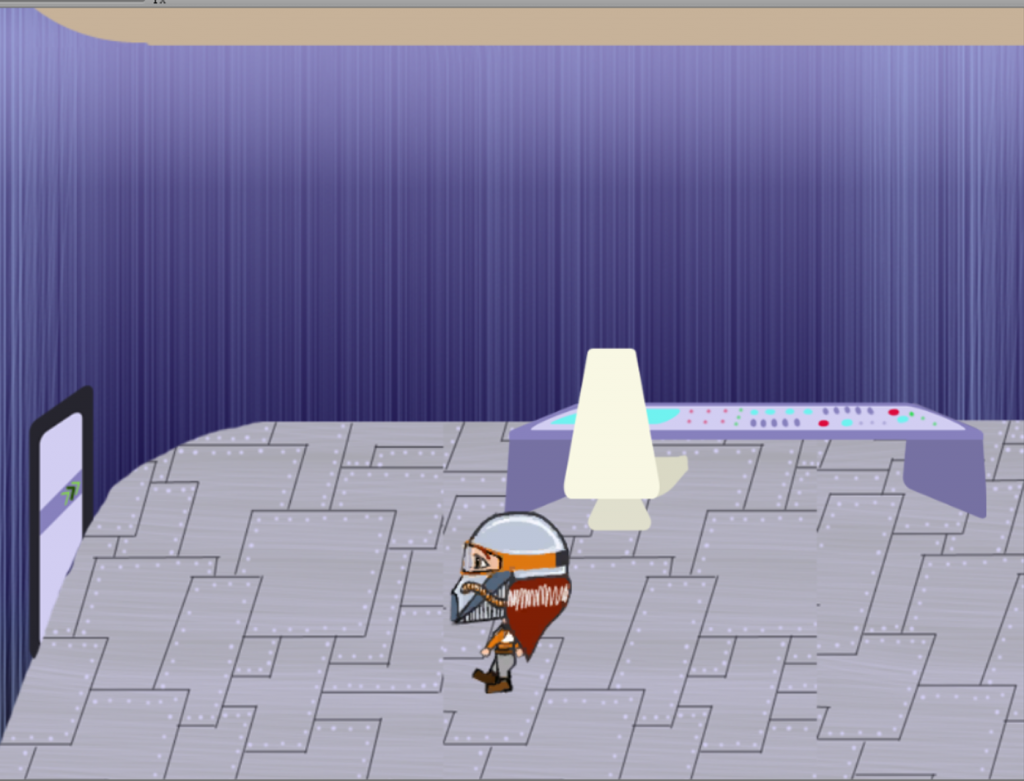This game follows the story of the protagonist, named Alessa, who joins a league of Space Pirates to earn money quickly to pay off her debts and pay for her wedding. It centers around the internal struggle that she has when her work and home life collide and create a situation in which she could lose everything. By taking this job with the pirates, Alessa ignores her morals to try and earn enough money to get out of the business as soon as possible and marry her fiance. However, when her job requires her to steal the resources her fiance is using to help cure diseases, she faces a potential impasse. And in this game, the player gets to make the tough choice for her.
While there are some aspects of the game that are satisfying, there are still many others that could be improved. For example, the door animations are smooth and aesthetically pleasing, but the door assets themselves are not always at the right scale or angle thus looking slightly wrong. Also, the speed of character movement is matched well to the walking animation but the animation is not as smooth as I would like, plus the sprites could be improved quite a bit. I could go on for a while since it is always easier to pick out the problems in one’s own work, but I will say that overall, the game has a good start and plays well enough for me to consider expanding and improving it in the future.
Initially, the main McGuffin in the game is the treasure, also known as the raw elements that the pirates are planning to plunder. However, one could make the argument that the fiance is the McGuffin, since a player’s understanding of the story could lead them to attempt to rescue him. How the player chooses to play the game determines what their motivations are. I would say that the short term goal is retrieving the elements, but the true McGuffin is, in fact, marriage. This is because this is the protagonists overall goal and everything else in between just manages to get in the way. Working the job with the pirates, getting into a conflict with the captain and her fiance, and paying off her debts are all things that keep the protagonist from her main goal.
The loops in this game are all related to the story, since the gameplay is mostly related to the internal struggle of the protagonist and how that makes the player feel. Therefore, the main forward loop is interacting with objects, which gives the player more information about the story, which allows them to progress to the next room, where they can interact with more objects that will either give them more information, or will give them a useful tool to get more information in one of the later rooms. This way, the player is rewarded with story elements and progression through the rooms. Plus, getting these rewards allows the player to progress towards the end of the game and get the good ending.
A forward loop in gameplay acts as the leading movement toward the end of the game, and the backward loop is what pushes back and keeps the player from quickly reaching the end. Therefore, keeping the player from progressing through the rooms would be an appropriate backward loop. The way I do this is by having certain doors locked until a specific task is completed, so if the player is progressing quickly, they are impeded by the locked door until they slow down to interact with some of the objects and fulfill the objective.
Because this game is based around story more than mechanics, the loops work together to make the experience of the story nonlinear. For example, the forward loop pushes the player to progress through the rooms, so it introduces the possibility of missing some story elements. The backward loop makes the player slow down, which introduces the possibility of noticing more intractable objects and thus being exposed to more narrative elements.
What I took from the readings and incorporated into my game is the idea that nonlinearity is about experiencing the same thing in different ways. For example, one player’s understanding of my game could be very different from another player’s simply by choosing to go to the bridge of the ship instead of going to the crew quarters. The player who goes to the bridge of the ship might get wrapped up in the goals set by the captain and might miss all the story elements that were present in the crew quarters. This could lead to the player having a very different understanding of the characters and relationships between them in the final room where the climactic choice takes place. Also, my game imitates the idea about a nonlinear story having multiple paths by having different endings that the player can get depending on the choices they make.
The nonlinearity of my design is tied in directly to my story. The main goal as a designer was to have players feel a range of emotions towards the characters to see if they would experience the second-hand internal conflict and how they would react overall. The nonlinearity of my level design allows for the player to have the freedom needed to view the circumstances of the characters in unique ways.
When designing the rooms, I used a lot of basic shapes to leave most to the imagination. They are simple enough to reuse the same elements and get the idea across, plus it has the added effect of making the rooms look like they are part of the same ship.

Overall, I kept level design pretty minimalistic. I only added assets that were necessary to the player’s interaction with the world and tried to keep from adding anything that would serve no purpose but to take up space. Thus I used the minimalistic approach when populating my scenes to leave what was important and prevent useless clutter that would discourage the player from interacting with objects.

The way my game looks and sounds adds an atmosphere that helps build the world and make it believable. The repeated shapes draw the rooms together and help evoke emotions whether they are feelings of safety or unease. The music adds an air of playfulness, as do the characters. The color schemes I use also work to evoke emotions and bring a coherence to the idea.
By Anna Beliveau




